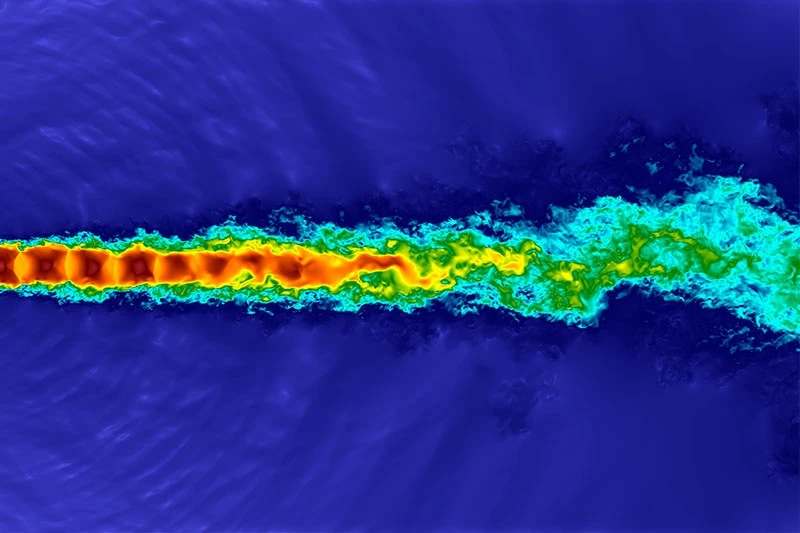
Transport Phenomena (Fenomena Transportasi)
Kursus ini membahas tentang formulasi matematika dalam fenomena transportasi transportasi yang menjelaskan keseimbangan makro dan mikro yang terjadi secara umum hingga masalah rekayasa proses yang spesifik. Analisis didasarkan pada keseimbangan shell dalam suatu sistem.
References:
- Bird, R. B., Stewart, W. E., Lightfoot, E. N., & Klingenberg, D. J. (2014). Introductory Transport Phenomena. John Wiley & Sons, Inc.
- Tosun, I. (2002). Modelling in Transport Phenomena: A Conceptual Approach. Elsevier.
Course Fee
Reviews
Schedule
Appointment with tutor(s)
Registration
Introduction to Transport Phenomena
This session introduce students to basics of transport phenomena and momentum transport, and will discuss:
- Three Levels for the Study of Transport Phenomena
- Viscosity and the Mechanism of Momentum Transport
- Thermal Conductivity and the Mechanism of Energy Transport
- Diffusivity and the Mechanism of Mass Transport
Shell Momentum Balances and Velocity Distributions in Laminar Flow
The materials discussed in this session includes:
- Shell Momentum Balances & Boundary Conditions
- Flow of a Falling Film
- Flow Through a Circular Tube
- Flow Through an Annulus
- Flow of Two Adjacent Immiscible Fluids
Shell Energy Balances and Temperature Distributions in Solids and Laminar Flow
The materials discussed in this session includes:
- Shell Energy Balances & Boundary Conditions
- Heat Conduction in a Steam Pipe
- Heat Conduction Through Composite Walls
- Heat Conduction with Temperature-Dependent
- Energy Transport with Energy Production
- Introduction to Forced Convection and Free Convection
Shell Mass Balances and Concentration Distributions in Solids and in Laminar Flow
The materials discussed in this session includes:
- Shell Mass Balances & Boundary Conditions
- Diffusion of Gases Through Solids
- Diffusion Away from a Slightly Soluble Sphere
- Diffusion with a Homogeneous Chemical Reaction
- Diffusion with a Heterogeneous Chemical Reaction
- Diffusion Through a Stagnant Gas Film
Equation of Change
Equation of change is the summary of shell balances in transport phenomena. To better understand it, this session will also discuss:
- Equation of Change for Isothermal Systems (Continuity, Motion, Mechanical Energy, and Agular Momentum Equation)
- Common Simplifications of the Equation of Motion
- Equation of Change for Nonisothermal Systems (Energy Equation)
- Special Forms of the Energy Equation
- The Equation of Change and Solving Steady-State Problems with One Independent Variables
- Equation of Change for Binary Mixtures (Continuity Equation for Binary Mixtures)
- The Equation of Change and Solving Steady-State Diffusion Problems
Introduction to Turbulent Flow
Turbulent flow are the most common flow pattern that process engineers will met in industries. This session discuss:
- Velocity Distributions in Turbulent Flow
- Temperature Distributions in Turbulent Flow
- Concentrations Distributions in Turbulent Flow
Interphase Transport for Isothermal Systems
Isothermal systems in transport phenomena discuss materials in:
- Definition of Friction Factors
- Friction Factors and Flow Regimes for Flow in Tubes
- Friction Factors and Flow Regimes for Flow Around Spheres
- Friction Factors and Pressure Drop Through Packed Columns
Interphase Transport in Nonisothermal Systems
While for nonisothermal system, the session includes materials in:
- Definition of Heat Transfer Coefficients
- Heat Transfer Coefficients for Forced Convection Through Tubes and Slits
- Empirical Correlations for Heat Transfer Coefficients for Forced Convection
- Heat Transfer Coefficients for Forced Convection Around Submerged Objects
- Heat Transfer Coefficients for Forced Convection Through Packed Beds
Interphase Transport in Nonisothermal Mixtures
This session continues from the previous session about isothermal and nonisothermal sesytem, which discuss:
- Definition of Mass and Heat Transfer Coefficient in One Phase
- Analytical Expression for Mass Transfer Coefficient
- Empirical Correlations for Binary Mass and Heat Transfer Coefficient in One Phase
Macroscopic Balances for Isothermal Flow Systems
This session includes materials in:
- Macroscopic Mass Balance
- Macroscopic Momentum Balance
- Macroscopic Angular Momentum Balance
- Macroscopic Mechanical Energy Balance
- Estimation of the Viscous Loss
- Application of the Macroscopic Balances to Solve Problems
Macroscopic Balances for Nonisothermal Systems
This session includes materials in:
- Macroscopic Energy Balance
- Macroscopic Mechanical Energy Balance
- Application of the Macroscopic Balances to Solve Steady-state Problems with Flat Velocity Profiles
- The d-forms of the Macroscopic Balances
- Application of the Macroscopic Balances to Solve Unsteady-state Problems with non-Flat Velocity Profiles
Macroscopic Balances for Multicomponent Systems
Multiple component systems are the capstone for the previous sessions, which will discuss:
- Macroscopic Mass Balance
- Macroscopic Momentum and Angular Momentum Balance
- Macroscopic Mechanical Energy Balance
- Application of the Macroscopic Balances to Solve Steady-state Problems
- Application of the Macroscopic Balances to Solve Unsteady-state Problems



